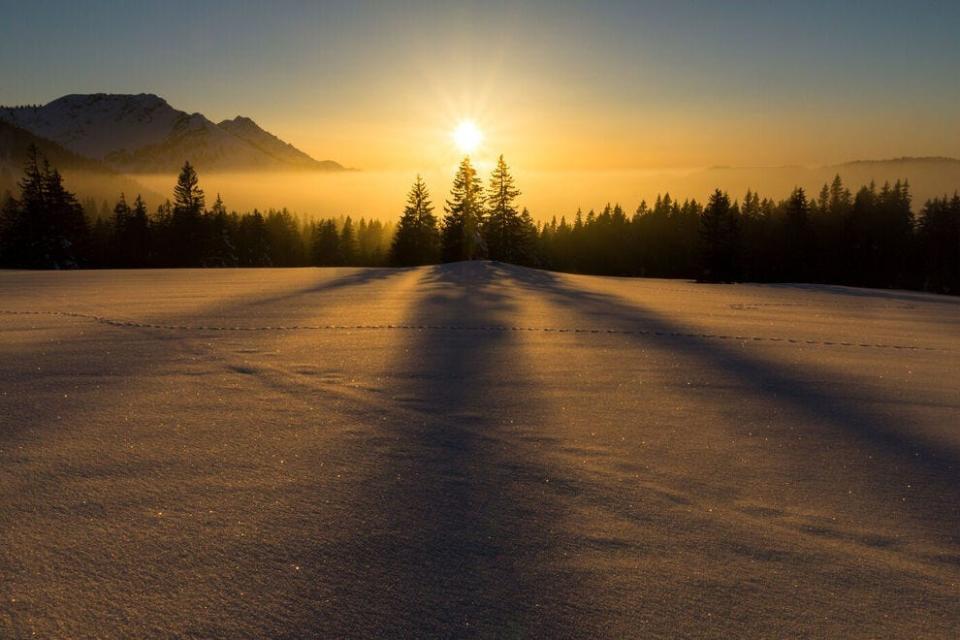The 2023 winter solstice is here: What to know about the official first day of winter

Get ready for the cold ? and the dark.
The winter solstice – marking the longest night and fewest hours of daylight of the year – occurs on Thursday, Dec. 21. Up here in the Northern Hemisphere, it also marks the beginning of astronomical winter.
South of the equator, in the Southern Hemisphere, it's the summer solstice, which means summer is starting.
According to the Old Farmer's Almanac, people often think the winter solstice is an event that spans an entire calendar day, but the solstice actually lasts only a moment. "Specifically, it’s the exact moment when a hemisphere is tilted as far away from the sun as possible," the Almanac said.
When is the winter solstice?
The solstice occurs on Dec. 21, at 10:27 p.m. EST. It happens at the same instant everywhere on Earth.
The date of the winter solstice varies from year to year and can fall anywhere from Dec. 20-23, but the 21st and 22nd are the most common dates.
NOAA winter 2023-2024 forecast: Here's where it's expected to be unusually warm this year
What is the winter solstice?
It's the precise moment at which the Northern Hemisphere is tilted farthest from the sun.

The solstice marks the beginning of winter
The solstice is the astronomical beginning of winter, even though meteorologists view winter as starting Dec. 1, which is the start of the coldest three months of the year in the Northern Hemisphere. After the solstice, the amount of daylight slowly starts to get longer again.
However, most locations don't have their earliest sunset or latest sunrise on the solstice. Those events occur either weeks before or after Dec. 21.
Is it also the coldest day?
The year's shortest day is typically not the coldest day of the year. There is a bit of a lag between the shortest day of the year and the coldest average temperatures for most spots in the U.S.
For example, the coldest days in Boston, on average, are Jan. 17-26, according to the National Weather Service. In Chicago, it's Jan. 17-20, and in Miami, it's Jan. 2-22. At the end of January, more heat finally begins arriving than leaving, and days slowly start to warm up.
What causes the seasons?
The Earth's tilted axis causes the seasons. During the Northern Hemisphere's winter, the land north of the equator is tilted away from the sun, which lowers the amount of the sun's energy across the Northern Hemisphere.
Of course, it's all opposite in the Southern Hemisphere, where Dec. 21 marks the beginning of astronomical summer.
And why is the Earth tilted? It's probably the result of collisions with various proto-planets and other massive objects during the formation of the solar system billions of years ago, according to NASA.
Where is the solstice celebrated?
One of the most famous solstice celebrations occurs at the ancient Stonehenge ruins in Wiltshire, England, where druids, pagans and other revelers gather each year to celebrate the event.
This article originally appeared on USA TODAY: Facts about winter solstice 2023: What to know about 1st day of winter